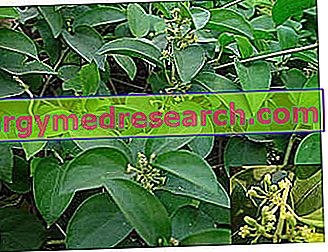VO2max, METS, IP and test to measure it
See also: Maximum oxygen consumption

It is generally expressed as Vo2Max : the maximum volume of oxygen consumed per minute.
"The maximum oxygen consumption is a global and integrated measure of the maximum intensity of exercise that a subject can tolerate for quite long periods of time" (Cerretelli and Prampero, 1987).
Strictly speaking, Vo2Max can be sustained for a maximum of ten minutes (Di Prampero).
However, since the exhaustion time is a function of the fraction of VO2Max actually used, subjects with a high value of Vo2Max are able to sustain, at the same time, exercises of higher intensity, or, at equal intensity, exercises of longer duration than subjects characterized by lower Vo2Max (Prampero).
From the analytical point of view the maximum oxygen consumption is expressed by the following formula
Maximum oxygen consumption = Heart rate x Systolic range x arteriovenous oxygen difference
VO2 max = FC x Gs x (Δa-v)
Heart rate (CF) represents the number of beats that the heart makes in a minute. This parameter is only marginally influenced by training.
The systolic range (GS) expresses the volume of blood (in ml) that comes from the left ventricle of the heart at each contraction (systole). This value increases especially in the initial period of training and then stabilizes.
The arteriovenous oxygen difference is the most important parameter. It represents the amount of oxygen that cells can extract from the bloodstream during the passage of blood in the capillaries. This parameter is strongly influenced by both genetics and training and depends essentially on:
- pulmonary ventilation
- peripheral oxygen transport by red blood cells and the hemoglobin contained in them
- density of the capillary bed at muscular level
- fiber composition (white and red) of muscle tissue
- number, size and efficiency of enzymes that catalyze energy reactions
- number, size and efficiency of mitochondria
THE VO2 max:
- it is a flow
- it can be expressed in liters O2 / min (in this case it is influenced by weight and body size)
- can be expressed in relation to body weight (mlO2 / kg / min)
- melle females is lower than males
- Average female population, 20 to 29 years: 35-43 ml / kg / min
- Average male population, 20 to 29 years: 44-51 ml / kg / min
- Maximum value recorded in a woman (skier): 74
- Maximum value recorded in a man (cross-country skier): 94
Normal Oxygen consumption at rest = 250 ml / min,
In case of hypothyroidism this value is lowered to 150 ml / min.
In the case of hyperthyroidism, it rises up to 400 ml / min instead
VO2 max is a genetic characteristic
With training, its value can be increased from 10% to 25%
The VO2max can be measured directly through the use of sophisticated and expensive equipment, which requires highly specialized personnel, or through indirect methods, accessible to all on cardio-fitness machines (generally using an exercise bike or treadmill). These latter methods exploit the correlation between the VO2max and the HRmax, or the maximum (max) heart rate (FC). The correlation now accepted is as follows:
| Correlation between VO2 and FC | |||
| % VO2max | % HR max | Mainly used energy substrate | Training purpose |
| 35 | 50 | lipids | slimming |
| 48 | 60 | lipids | slimming |
| 60 | 70 | lipid glucides | aerobic power |
| 73 | 80 | carbs | maximum aerobic power |
| 86 | 90 | carbs | anaerobic lactic acid power |
| 100 | 100 | creatine phosphate | anaerobic alattacid power |
PREDICTIVE VO2 MAX TEST
The PREDICTIVE TEST OF MAXIMUM OXYGEN CONSUMPTION is able to predict indicatively the VO2max of a subject based on the time it takes to complete a certain distance, on foot, in the shortest possible time.
Note: use the dot as the decimal separator, not the comma; for example enter 5.5 in the distance box to specify 5 kilometers and 500 meters.
REFERENCE VALUES (VO2 max)
| FEMALES | ||||||
| Age | Very poor | poor | Middle | Good | Great | Excellent |
| 13-19 | <25.0 | 25.0 - 30.9 | 31.0 - 34.9 | 35.0 - 38.9 | 39.0 - 41.9 | > 41.9 |
| 20-29 | 23.6 - 28.9 | 29.0 - 32.9 | 33.0 - 36.9 | 37.0 - 41.0 | > 41.0 | |
| 30-39 | 22.8 - 26.9 | 27.0 - 31.4 | 31.5 - 35.6 | 35.7 - 40.0 | > 40.0 | |
| 40-49 | 21.0 - 24.4 | 24.5 - 28.9 | 29.0 - 32.8 | 32.9 - 36.9 | > 36.9 | |
| 50-59 | 20.2 - 22.7 | 22.8 - 26.9 | 27.0 - 31.4 | 31.5 - 35.7 | > 35.7 | |
| 60+ | 17.5 - 20.1 | 20.2 - 24.4 | 24.5 - 30.2 | 30.3 - 31.4 | > 31.4 |
| MALES | ||||||
| Age | Very poor | poor | Middle | Good | Great | Excellent |
| 13-19 | 35.0 - 38.3 | 38.4 - 45.1 | 45.2 - 50.9 | 51.0 - 55.9 | > 55.9 | |
| 20-29 | 33.0 - 36.4 | 36.5 - 42.4 | 42.5 - 46.4 | 46.5 - 52.4 | > 52.4 | |
| 30-39 | 31.5 - 35.4 | 35.5 - 40.9 | 41.0 - 44.9 | 45.0 - 49.4 | > 49.4 | |
| 40-49 | 30.2 - 33.5 | 33.6 - 38.9 | 39.0 - 43.7 | 43.8 - 48.0 | > 48.0 | |
| 50-59 | 26.1 - 30.9 | 31.0 - 35.7 | 35.8 - 40.9 | 41.0 - 45.3 | > 45.3 | |
| 60+ | 20.5 - 26.0 | 26.1 - 32.2 | 32.3 - 36.4 | 36.5 - 44.2 | > 44.2 | |
Maximum oxygen consumption and anaerobic threshold
In many cases it is preferable to measure the anaerobic threshold compared to VO2max.
In fact in athletes the VO2max rises at the beginning of the training then it does not increase anymore. What is changed is the percentage of VO2 max that can be sustained for a long time. In addition, the anaerobic threshold in many endurance disciplines correlates better with performance, thus constituting a better index of aerobic power.
In untrained subjects, if compared with the maximum oxygen consumption, the anaerobic Threshold coincides with approximately 55% of VO2max. In high level athletes this value can reach 85% of the maximum oxygen consumption.
Second part "



